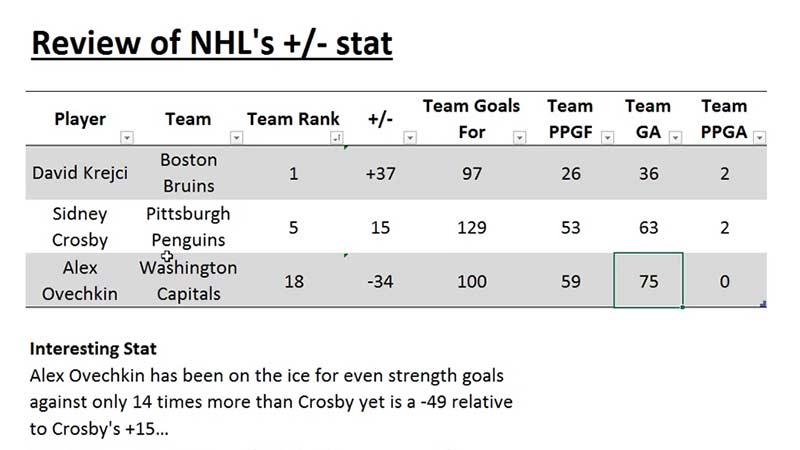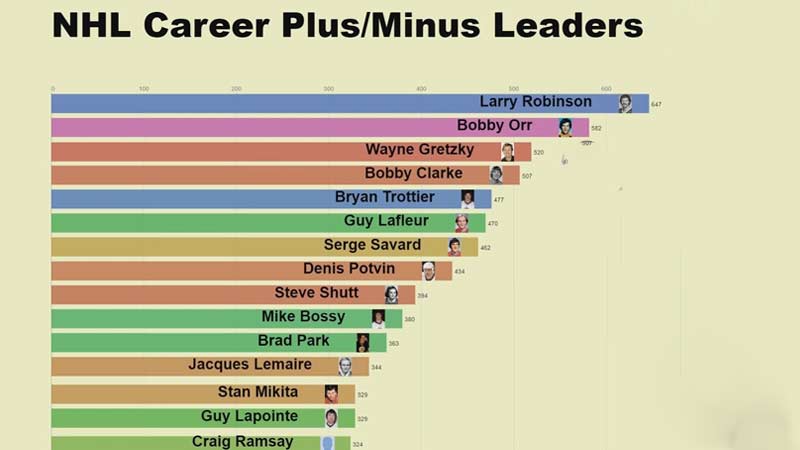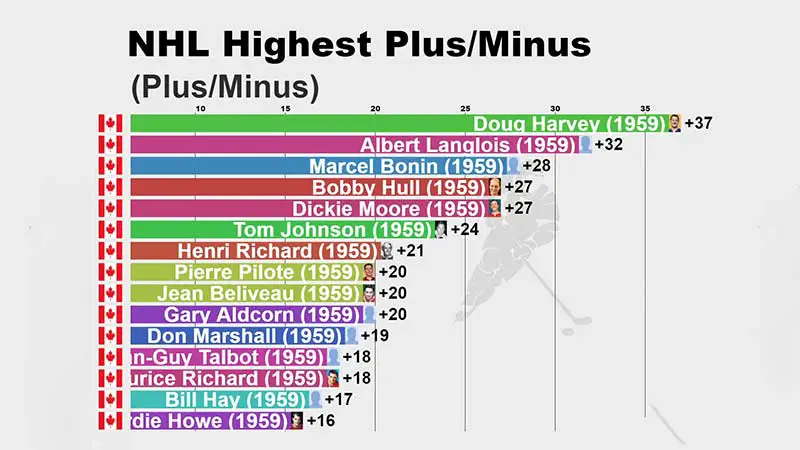When exploring the world of hockey statistics, one metric that often stands out is the plus-minus rating. This particular stat provides valuable insights into a player’s on-ice performance by measuring the even-strength goals for and against while they are in the game.
Excluding power play and penalty kill situations, the plus-minus rating offers a glimpse into a player’s impact during crucial moments of the game.
From 1983 to 2008, the NHL recognized the significance of the plus-minus statistic by awarding the player with the highest rating.
This award aimed to identify long-term trends and highlight players who consistently contributed to their team’s success.
With a minimum game requirement for eligibility, the award celebrated players who demonstrated a strong presence on the ice throughout the season.
Understanding the nuances of the plus-minus rating can provide fans and analysts with a deeper appreciation for the strategic elements of the game and the individual contributions that shape a team’s performance.
Understanding Plus-Minus in Hockey
The Basics of Plus-Minus
Plus-minus in hockey is a key statistic that measures a player’s on-ice impact by tracking the number of goals scored and conceded while the player is on the ice at even strength.
It provides valuable insights into a player’s overall performance and contribution to the team’s success during gameplay.
A positive plus-minus value indicates that a player’s presence on the ice results in more goals for their team, while a negative value suggests more goals against.
The Evolution of the Plus-Minus Statistic
Originally introduced as a metric to evaluate player performance, the plus-minus statistic has evolved over time to become a crucial indicator of a player’s defensive and offensive capabilities on the ice.
From its inception as a simple measure of goals scored and conceded, it has transformed into a sophisticated tool that offers deeper insights into a player’s impact during critical moments of the game.
This evolution has enabled coaches and analysts to assess player effectiveness more comprehensively and make strategic decisions based on performance data.
Analyzing the Plus-Minus

Its Role in Player Evaluation
The plus-minus rating in hockey serves as a key metric for evaluating a player’s performance on the ice.
By tracking even-strength goals for and against while a player is on the ice, this statistic provides a valuable snapshot of their impact during gameplay.
The NHL recognized players with the highest plus-minus ratings from 1983 to 2008, highlighting their consistent contributions to their team’s success.
This metric offers crucial insights into how a player influences the outcome of a game, showcasing both their defensive and offensive capabilities in various game situations.
Strengths and Limitations
While the plus-minus statistic is a valuable tool in assessing a player’s on-ice effectiveness, it comes with its own set of strengths and limitations.
One of its key strengths lies in its simplicity and ease of interpretation, providing a quick assessment of a player’s impact.
However, the statistic may not always account for contextual factors such as quality of teammates, opponents faced, or playing time variations. This limitation can sometimes lead to misleading assessments of a player’s overall performance.
Despite this, the plus-minus rating remains a fundamental metric used by coaches and analysts to gauge player contributions and make informed decisions based on in-game performance data.
Situational Plus-Minus

Understanding Contextual Factors
Situational plus-minus (Sit) in hockey is a comprehensive metric that considers all team-based goals except penalty shot and shootout goals. It assigns weight to each goal based on the number of skaters, excluding goaltenders, on the ice.
The plus-minus rating is calculated by dividing the number of skaters on the ice for the team scored upon by the number of skaters on the scoring team, applied as a plus for the scoring team and a minus for the team scored upon.
Application in Strategies
The situational plus-minus rating provides valuable insights into player performance during critical game moments in hockey.
It recognizes the last two players who touch the puck before a teammate scores, given that no defender plays or possesses the puck in between.
This metric helps in evaluating player effectiveness in both offensive and defensive situations, offering coaches and analysts data to make strategic decisions based on in-game performance.
Plus-Minus vs. Other Metrics
Comparing with Shot-Based Metrics
When evaluating a player’s performance in hockey, plus-minus and shot-based metrics play crucial roles in providing a comprehensive analysis.
While plus-minus focuses on the goal differential when a player is on the ice, shot-based metrics, such as Corsi and Fenwick, track shot attempts to gauge puck possession and offensive pressure generated by the player and the team.
In essence, plus-minus reflects the outcome of goals scored during gameplay, highlighting a player’s impact on the scoreboard.
On the other hand, shot-based metrics offer insights into puck possession, shot generation, and overall offensive contribution, providing a more detailed perspective on a player’s on-ice performance beyond just goals for and against.
Integration with Advanced Hockey Analytics
In the realm of advanced hockey analytics, the integration of plus-minus with sophisticated metrics like Expected Goals (xG) and Goals Above Replacement (GAR) enhances the evaluation of player performance.
While plus-minus indicates goal differentials, advanced analytics delve deeper into assessing the quality of shots taken, performance relative to league averages, and the overall value a player brings to the team.
By combining plus-minus with advanced hockey analytics, coaches and analysts can gain a holistic understanding of a player’s contributions, considering not only the goals scored but also the underlying metrics that influence in-game outcomes.
This integration aids in making data-driven decisions, optimizing strategies, and enhancing player development based on a more comprehensive evaluation of performance metrics in hockey.
Frequently Asked Questions
What is the plus-minus rating in hockey?
The plus-minus rating in hockey measures a player’s on-ice impact by tracking goals scored for (+1) and against (-1) while they are on the ice.
What is situational plus-minus (Sit) in hockey?
Situational plus-minus (Sit) is a metric that evaluates a player’s performance in critical game moments, providing insights beyond overall plus-minus numbers.
How does plus-minus compare to Corsi and Fenwick in hockey analytics?
Plus-minus measures goal differential, while Corsi and Fenwick track shot attempts, offering different perspectives on player performance in hockey.
How is plus-minus integrated with advanced analytics like Expected Goals (xG) and Goals Above Replacement (GAR)?
Advanced analytics like xG and GAR are used alongside plus-minus to enhance player evaluation and provide a more comprehensive assessment of player contributions in hockey.
What is the significance of the Plus-Minus Award in the NHL?
The Plus-Minus Award in the NHL recognizes exceptional defensive contributions by players throughout a season, highlighting the critical role of defensive strategies in a team’s success.
Conclusion
Understanding the plus-minus rating in hockey is crucial for evaluating a player’s on-ice impact. By considering goals for and against, this metric provides valuable insights into defensive prowess and overall performance.
Situational plus-minus (Sit) offers a nuanced perspective on player contributions during critical game junctures. While shot-based metrics like Corsi and Fenwick provide alternative viewpoints, each metric brings unique value to player analysis.
Integrating plus-minus with advanced analytics such as Expected Goals (xG) and Goals Above Replacement (GAR) enhances the depth of player assessment.
The Plus-Minus Award in the NHL further underscores the importance of defensive excellence and strategic gameplay in a team’s competitive edge.








James Felix